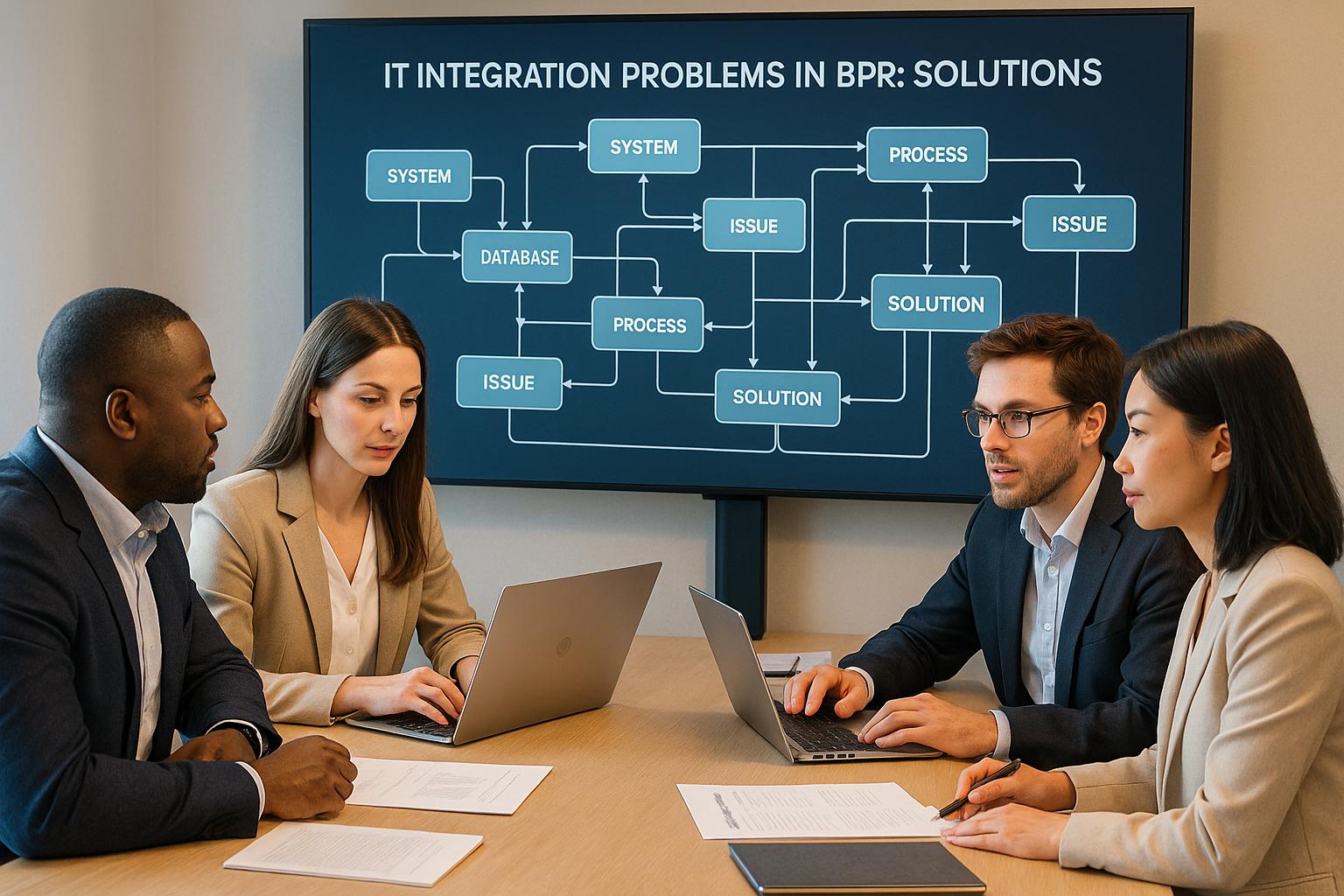Remote work thrives on fast, secure file sharing. When teams handle massive files - like 4K videos or CAD designs - traditional methods like email or basic cloud storage fall short. Modern large file transfer tools solve these issues by offering:
- No file size limits: Transfer files up to 250 GB or more.
- Faster speeds: Technologies like peer-to-peer (P2P) and file chunking cut transfer times significantly.
- Advanced security: End-to-end encryption, multi-factor authentication, and compliance with regulations like HIPAA and GDPR.
- Collaboration-friendly features: Real-time syncing, version control, and integrations with platforms like Microsoft Teams and Google Workspace.
For example, companies using tools like Dropbox Transfer or Resilio Connect report up to 40% faster project completion. These solutions simplify workflows, improve productivity, and ensure data safety - key factors for remote teams managing large projects. Whether you're in media, architecture, or data science, adopting these tools can transform how your team collaborates.
How to Transfer Large Files Remotely for FREE with NO ACCOUNT - Croc Tutorial
Important Features of Large File Transfer Tools
When traditional methods fall short, modern file transfer tools step in to eliminate bottlenecks. These tools bring together key features that make handling large files not only easier but an integral part of efficient workflows for remote teams.
No File Size Limits and Fast Transfer Speeds
Gone are the days of frustrating size restrictions. Advanced file transfer solutions, such as Dropbox Transfer, allow for seamless transfers of files up to 250 GB, and enterprise-level platforms can handle files in the terabyte range. This flexibility opens up new possibilities for teams dealing with massive datasets or media files.
Speed is another game-changer. Tools leveraging technologies like peer-to-peer (P2P) replication enable direct communication between endpoints, making transfers 3–10 times faster than older methods. In some environments, speeds can exceed 100 Gbps per cluster. File chunking, which breaks large files into smaller parts for simultaneous transfers, further slashes transfer times.
Take 2023, for instance: a media production company using Resilio reported a 75% reduction in file sync time across its global offices. This was achieved through a combination of P2P architecture and selective sync capabilities. Of course, speed and capacity mean little without strong safeguards.
Strong Security Features
When transferring sensitive data, security is non-negotiable. Leading tools employ end-to-end encryption using AES-256 and TLS 1.3 protocols to secure files both in transit and at rest. Additional measures, like multi-factor authentication and granular user permissions, ensure that only authorized personnel can access or modify files.
For businesses in the United States, compliance with regulations such as HIPAA and state privacy laws is critical. Many platforms include audit trails to log file access, making compliance audits smoother. Moreover, alignment with frameworks like the NIST Privacy Framework supports organizations in managing data rights and metadata governance effectively.
Advanced Features for Team Collaboration
These tools go beyond transferring files - they enhance collaboration. Real-time synchronization ensures everyone is working with the latest file versions, eliminating confusion and outdated edits.
Selective sync is another standout feature, letting users decide which files or folders are stored locally. This optimizes storage and bandwidth, which is especially useful for teams handling large datasets. Automated workflows take it a step further by triggering actions - like sending alerts or initiating backups - based on file changes, reducing manual effort.
Integration capabilities allow these tools to work seamlessly with platforms like Microsoft 365, Google Workspace, and Slack, boosting overall productivity. Features like version control help teams track changes, compare file iterations, and revert to earlier versions if needed. Automated backups add an extra layer of security against accidental data loss.
For example, a design agency using Dropbox Transfer significantly sped up its client review process by securely transferring large design files, up to 250 GB in size. This change cut project turnaround times by 40%.
Adding File Transfer Solutions to Remote Work Systems
Bringing large file transfer tools into your remote work setup requires careful planning to align with existing systems and workflows. The goal is to choose tools that not only fit seamlessly into your current environment but also address the specific needs of your remote team.
Working with Collaboration Platforms
File transfer tools are most effective when integrated directly into the platforms your team already uses daily. Popular options like Microsoft Teams, Google Drive, and Dropbox make it easy for remote workers to share and access large files without needing to juggle multiple apps.
Take Triofox as an example - it integrates directly with Microsoft Teams and Office 365, offering a familiar file explorer interface within the workflow. This minimizes the learning curve and helps team members adopt the tool more easily.
Integrating these tools usually involves setting up connectors, managing authentication, and aligning file storage with your organization’s structure. These platforms already have capacity limits in place to ensure smooth file sharing, which further simplifies the process .
Real-time collaboration becomes much more efficient when file transfer tools work within familiar platforms. Teams can co-edit documents, provide feedback on large media files, and track project progress - all without worrying about version control issues. This reduces email clutter and helps projects move faster by ensuring everyone has access to the latest files.
To make the most of these integrations, companies should implement policy-based management. Automating tasks like file syncing, caching, and purging according to company rules ensures efficient data handling while maintaining security standards .
Once integration is in place, the focus shifts to ensuring your infrastructure can handle the demands of these tools.
System Requirements for Best Performance
For smooth and secure large file transfers, a strong system infrastructure is non-negotiable. High-speed internet - ideally 100 Mbps or higher - is a must to keep things running efficiently.
Hybrid cloud environments offer the flexibility remote teams need by allowing access to files stored both on-premises and in the cloud. This setup helps maintain control over sensitive data while supporting distributed teams. For peer-to-peer solutions, deploying agents on all endpoints is key, which means ensuring compatibility with operating systems and sufficient device resources. Resilio, for instance, reports transfer speeds exceeding 100 Gbps per cluster, with sync times up to ten times faster than traditional methods.
Technologies like CDNs (Content Delivery Networks) and prioritized syncing also play a role in boosting performance. By caching files on servers worldwide and updating only the modified parts of large documents, they optimize bandwidth and speed.
Storage planning is another critical factor. Selective sync features let remote workers decide which files to keep locally, saving storage space while ensuring quick access to frequently used files .
Before rolling out these tools across your organization, it’s essential to test compatibility with your current operating systems, cloud platforms, and security measures. Pilot testing can help identify potential issues early, giving IT teams a chance to fine-tune the setup.
For expert guidance, organizations can consult the Top Consulting Firms Directory to find specialists in digital transformation and IT integration tailored to remote work needs.
sbb-itb-97f6a47
Security and Compliance in File Transfer
When remote teams handle sensitive data, ensuring secure file transfer becomes a top priority. Any solution designed for transferring large files must not only protect the data but also comply with strict U.S. regulations that dictate how companies manage, share, and track their digital assets.
Data Privacy and Regulatory Compliance
At the heart of secure file transfers lies strong encryption. Most leading platforms rely on AES-256 encryption for data at rest and TLS 1.3 for data in transit to safeguard information during transfers. For instance, services like Raysync and Dropbox adopt these standards to maintain data security.
Security certifications such as SOC 2 Type II, ISO 27001, and FedRAMP demonstrate that providers meet the rigorous compliance standards required for industries like government and healthcare. Additionally, audit trails are critical for meeting regulations like HIPAA, CCPA, and SOX. Solutions such as Egnyte, Raysync, and JSCAPE offer detailed logs that track file access, modifications, and transfers, enabling administrators to oversee activity and prepare reports for audits.
Enterprise-grade file transfer tools not only enhance security but also improve productivity. Features like real-time access controls and compliance tools allow businesses to securely transfer sensitive data at high speeds while minimizing the risks associated with non-compliance.
Beyond encryption and compliance, maintaining the integrity of file versions plays a key role in ensuring both security and operational efficiency.
Version Control and Backup Options
Strong encryption and compliance measures are just the foundation. Effective version control adds another layer of protection while boosting productivity. Platforms like Dropbox and Egnyte offer automatic versioning, which allows teams to recover earlier versions of files when needed. This feature not only prevents accidental data loss but also supports auditability.
Enterprise solutions also include automated backups and data recovery options, ensuring business continuity even in the face of human error or cyber threats. For example, some tools can accelerate file transfer speeds by up to 10 times compared to traditional methods. Solutions like GoAnywhere even allow files to be transferred while they are still growing or being encoded, a feature particularly valuable for industries like media and entertainment. For organizations handling highly sensitive information, FIPS 140-2 compliance adds another layer of security. GoAnywhere, for example, provides FIPS-certified encryption, supports unlimited file sizes, and offers comprehensive audit capabilities.
IT teams should also focus on critical integration and security best practices. Look for tools that seamlessly integrate with platforms like Microsoft 365, Google Workspace, and Slack. Set up granular access controls and enforce strong authentication methods such as SSO (Single Sign-On) and MFA (Multi-Factor Authentication). Regularly review audit logs and test backup and recovery procedures to ensure consistent data protection.
For tailored advice on implementing secure file transfer solutions that align with specific compliance needs, organizations can explore the Top Consulting Firms Directory to connect with experts in IT security, digital transformation, and regulatory compliance.
Comparison of Popular Large File Transfer Tools
When it comes to transferring large files, remote teams often turn to tools like Dropbox Transfer, Resilio Connect, AnyDesk, and Triofox. Each of these tools has its own strengths, catering to different business needs and addressing common challenges like file size limits and slow transfer speeds. Below, we’ll break down what sets these options apart to help you find the right fit for your team.
Dropbox Transfer stands out for its ease of use and broad adoption. It allows file transfers of up to 250 GB per file and offers secure links with password protection and expiration dates. Since it integrates seamlessly with Dropbox storage, clients can access files instantly without needing to create an account. This makes Dropbox Transfer a great choice for teams looking to eliminate collaboration delays.
Resilio Connect takes a unique approach by using peer-to-peer architecture. With no practical file size limits, it delivers exceptional performance in distributed environments. The platform has handled massive transfers, including over 450 million files in a single job. This makes it ideal for global teams that need continuous synchronization across multiple locations.
Triofox is tailored for enterprises, particularly those using Microsoft-based systems. It connects on-premises file servers to the cloud, enabling secure and accessible file sharing. Triofox integrates deeply with tools like Microsoft Teams, Office 365, Azure AD, and SharePoint, making it a natural choice for organizations already invested in Microsoft ecosystems.
AnyDesk combines remote desktop functionality with file transfer features. While its primary use is IT support, it includes secure file transfer options using TLS 1.2 encryption. However, it’s better suited for smaller files and isn’t optimized for transferring very large files, making it most effective for IT workflows.
Feature Comparison Table
Here’s a quick look at how these tools compare across key features:
| Tool | File Size Limit | Transfer Speed | Security Features | Integration Options | Pricing Model |
|---|---|---|---|---|---|
| Dropbox Transfer | Up to 250 GB | Fast (CDN-backed) | Encryption, password protection, expiration dates | Dropbox, Slack, Microsoft Teams, APIs | Free (2 GB), Paid plans (up to 250 GB) |
| Resilio Connect | No practical limit | 3–10x faster than FTP; 100+ Gbps per cluster | End-to-end encryption, granular access controls | Any IT infrastructure, workflow-friendly | Custom enterprise pricing |
| Triofox | Enterprise-scale | Optimized for remote access | Granular access controls, Azure AD integration | Microsoft Teams, Office 365, SharePoint, on-premises servers | Custom enterprise pricing |
| AnyDesk | Limited (several GB) | Fast for small files | TLS 1.2 encryption, RSA 2048 key exchange | Remote desktop workflows, IT support tools | Starts at $14.90 per user per month |
Which Tool Fits Your Needs?
The right tool depends on your team’s specific requirements. For example:
- Dropbox Transfer is ideal for creative agencies or marketing teams that need to send large deliverables to clients.
- Resilio Connect fits engineering firms or media companies that rely on high-volume synchronization across distributed teams.
- Triofox appeals to industries like legal, healthcare, and finance, where secure file sharing and compliance are top priorities.
- AnyDesk works best for IT support teams that need occasional file transfers alongside remote desktop access.
If you’re unsure which tool aligns with your compliance needs or integration requirements, the Top Consulting Firms Directory is a valuable resource. It connects businesses with IT consultants who specialize in secure file transfer solutions and digital transformations. Choosing the right tool can make all the difference in overcoming file transfer challenges in today’s remote work environment.
Conclusion: Improving Remote Work with Large File Transfer Solutions
The advantages of adopting large file transfer tools are undeniable, especially for remote work environments. Companies utilizing these platforms report up to 40% time savings and transfer speeds that are 3–10 times faster than traditional methods . These tools not only boost efficiency but also address the unique challenges of managing data-heavy projects across distributed teams.
Modern file transfer tools offer features like real-time synchronization, version control, and seamless integration with collaboration platforms such as Microsoft Teams and Google Workspace. This means remote teams can tackle complex projects without the delays that used to hinder productivity. For example, Dropbox Transfer allows files up to 250 GB to be shared, making it easier for creative and technical teams to collaborate as if they were working side by side.
Security is another critical advantage. These tools are equipped with end-to-end encryption, granular access controls, and audit trails, ensuring compliance with regulations like HIPAA and GDPR . By protecting sensitive data and meeting regulatory standards, these solutions provide peace of mind for businesses operating in industries with strict compliance requirements.
Scalability is also a standout feature. Enterprise-grade solutions can manage operations across hundreds of endpoints at once, making them ideal for large-scale, distributed teams.
Key Considerations for Business Leaders
To make the most of large file transfer tools, focus on solutions that offer unlimited file size capabilities, fast transfer speeds, strong security features, and integration options with your existing software. Successful implementation involves evaluating current workflows, establishing clear security protocols, and providing staff training. Testing tools in a pilot phase and gathering feedback from users can help ensure a smooth transition.
For additional guidance, the Top Consulting Firms Directory connects businesses with IT consultants who specialize in areas like solution selection, integration strategies, and change management. These experts can help align file transfer tools with your company’s broader goals while ensuring compliance and operational efficiency.
Remote work is here to stay, transforming the way we do business. By investing in reliable file transfer solutions, companies can position themselves for success in this new era of distributed work.
FAQs
How do large file transfer tools protect sensitive data and comply with regulations like HIPAA and GDPR?
Large file transfer tools put data security and compliance front and center by employing cutting-edge encryption techniques, like end-to-end encryption, to safeguard files both in transit and at rest. They also use strict access controls to ensure only authorized individuals can access sensitive files.
To align with regulations such as HIPAA and GDPR, these solutions often come equipped with features like detailed audit logs, robust user authentication, and secure data deletion protocols. Many providers also undergo regular compliance audits to confirm their services adhere to stringent legal and regulatory requirements. This approach helps businesses confidently manage sensitive and confidential information.
How do large file transfer tools enhance collaboration in platforms like Microsoft Teams and Google Workspace for remote teams?
Large file transfer tools make it easier for remote teams to collaborate by allowing them to share large amounts of data quickly and securely within platforms like Microsoft Teams or Google Workspace. This approach removes the hassle of relying on external storage services, cutting down delays and keeping workflows running smoothly.
With these tools, teams can send and receive large files effortlessly without stressing over size restrictions or potential security concerns. This keeps communication seamless and helps teams stay productive, no matter where they’re working from.
What should businesses consider when choosing a large file transfer solution for remote work and their existing IT setup?
When choosing a large file transfer solution, it's important for businesses to assess their unique requirements. Think about factors like how often you'll need to transfer files, the size of those files, security protocols, and how well the solution will work with your existing IT setup. Plus, ease of use should be a priority to ensure your remote teams can adopt it without any hiccups.
Look for options that provide strong encryption, can grow with your needs, and integrate smoothly with tools your team already relies on - such as cloud storage services or project management platforms. Trying out a solution during a trial period is a smart way to see if it aligns with your workflow and boosts team collaboration.


